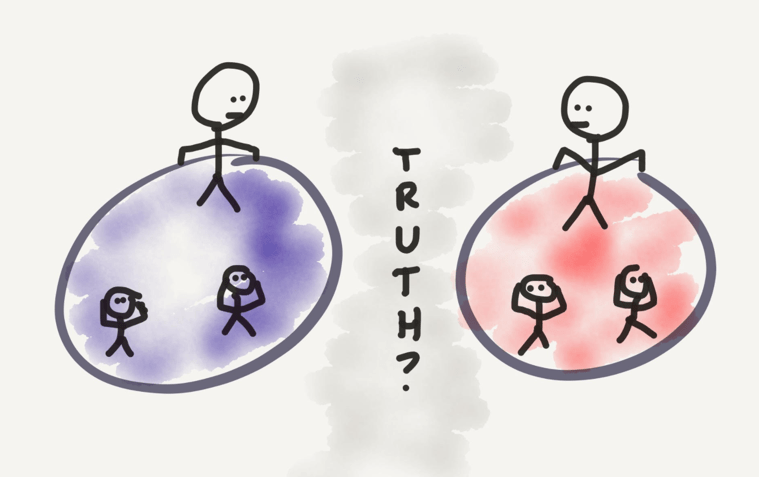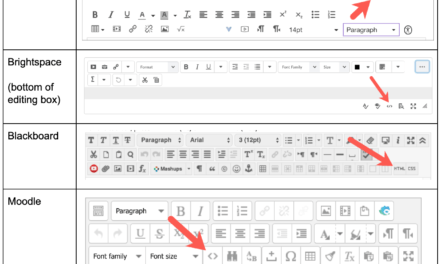After the 2016 U.S. election ended, we all got a rude awakening to just how bad the echo chambers and filter bubbles have gotten. Our social networks are streams of one-sided news stories. News outlets are increasingly biased. Viral fake news spreads like wildfire and the implications are scary.
In light of recent events, I decided to make a conscious effort to escape from the echo chambers and redesign my consumption of news to try to get a better sense for what is a reflection of true reality and what is not.
In case you find yourself in the same situation and would like to try to escape your echo chamber, here are some of my strategies:
1. De-newsed Facebook: One by one, I removed every single news source I encountered from Facebook using the “Hide” feature in the upper right hand corner of shared posts. This means I removed news sources I considered biased as well as those I consider legit. I will no longer allow Facebook to decide what news I see and what news I do not see. I just don’t want to see any news on Facebook. Period. On the bright side, Facebook has returned to a state where I actually do see pictures of friends, rants about “new math” and cute cat photos – which is a nice haven from what it had become. This removed my largest echo chamber source of news.
In case you don’t know how to turn off feeds from sites in Facebook, here’s what that looks like:
2. One reliable news source: I read a single reliable news source each morning (for me that is the New York Times. In particular, I read using the “Today’s Paper” app, which delivers the paper in a very similar fashion to the printed version, without ads. This is important because if you just visit a news site, you still fall victim to following only the stories you’re likely to click on instead of seeing a list of all the stories of the day. While the NY Times might not be your choice for most unbiased news, I figure this is balanced by living in conservative Utah. Don’t judge. Also see #3.
3. Highly-biased contrast bumpers: After reading my daily dose of news, I go to Blue Feed Red Feed, a project from the Washington Post. This provides the most extreme liberal and conservative “viral” posts on a variety of topics. While seeing some of these stories makes me a bit ill, I find it better than seeing delivery from friends and family on Facebook (with additional commentary from them that makes me even more ill). What I’m starting to find is that often both “sides” often tell an incomplete story, the part of the story that makes them look good or the other side look bad. One day last week, the blue feed had stories like “Trump has only lobbyists in his cabinet” and the red feed provided stories like “Trump fires all lobbyists from his cabinet.” Reality was somewhere between those two stories – Trump did seem to have developed a cabinet with a lot of lobbyists AND he then fired most of them.
“Truth” is somewhere in between the bumpers of the most liberal stories and the most conservative stories. But knowing what the bumpers are on these extremes helps me rationally evaluate the stories I see throughout the day and also helps me with #4.
4. Avoidance of clear click-bait: Armed with the most atrociously viral clickbait of the day (from step #3) I can more clearly avoid stories I see on Twitter and banner links to stories that are the viral nonsense of the day. Clicking on this stuff means the world will just produce more of it. Making these sites profitable to advertisers is how they stay in business. If I had not read some of the viral headlines on Blue Feed Red Feed, I would be more susceptible to clicking on stories that are obviously designed to goad one side or the other.
5. No TV News: TV news is designed to be entertainment. So if you’re watching TV News, I’d really consider stopping all together. You don’t realize how bad it is until you remove yourself for a while. When I am forced to watch it in airports, I find it hard to believe that it provides any real value other than making us all terrified of each other (see #6).
6. Actually talk to people who are not like you: I am making a more active effort (see Lean in to the Discomfort) to try to talk to other people who are not “just like me” more: At the gym, in the grocery store, and while out on walks. I am trying to seek out those who are from other generations, other educational backgrounds, other religions, etc. and engage in conversation. We have got to put down our echo-chamber-filled devices and apps and get to know the people in our physical proximity again.
Those are my strategies, what are yours? And if you don’t think you’re in an echo chamber … well, how do you know you’re not?





